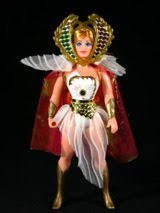
Imagine what it would be like to come to consciousness (or die) amidst the destruction and wreckage that is documented in the above photograph . . . This is on of many aerial photographs taken of Hiroshima after the United States government decided that, to drop an atomic bomb on the city, was the only way to end WWII.

This book has been a topic of debate among "war zealots" since the book was published in America. The debate surrounds the story that is told through the perspective of a seven-year Japanese girl living in Hiroshima on the day that the U.S. dropped the atomic bomb on the unsuspecting city of civilians. The imagery created through the text is reflected in the abstracted images of the dead and suffering women, men, and children who have been burned and charred by the "flash." Some of the images of humans are unclothed (see the cover illustration), likely because their clothing has turned to ash from the immense heat of the atomic bomb. The story is rampant with the somber emotions and feelings of loss and destruction, it is unlike any children's picture book I have ever read. This book opened my eyes to the "other side," and that perhaps, was the authors very intention.
The opposition feels that, the story is one-sided and fails to mention other important aspects of WWII, where the Japanese are the primary protagonists in the violence that occurred during the was.
I respect the opinions of others who may feel that the story is an "inaccurate" portrayal of WWII for American children, however I HAVE TO politely disagree with this closed-minded way of thinking. This is why: American children, and children around the world, are deprived of the option to decide (USING MULTIPLE VANTAGE POINTS) how to interpret historical or cultural events and the associated emotions for themselves. I feel the power of analysis and interpretation is an essential aspect of learning to think for oneself. When people say things like, "this book is too graphic and depressing for children," or "this book sends an anti-American message," they are only harboring resentment, anger, and reinforcing their own insecurities about the treachery that occurred on that day in our history. They need to get over it, there are plenty of books that tell the story from a strictly American perspective. Why is it that our culture is so egotistic that we are uncomfortable showing empathy for "others" - "others" that have been affected and impacted by OUR own acts of violence?
I'm sure many will disagree with the viewpoints I presented in this interpretation - "WHATEVER!" I FIRMLY BELIEVE, that If we limit to our children to reading stories that are always told through the American nationalist perspective - as many of them are, especially in the public school system - then we are limiting their ability to develop into open-minded,INDIVIDUAL who are able to develop unique interpretations of what they read based on all viewpoints and perspectives.


I am going to have to agree with you. I feel that it is important to teach from the American perspective but I also feel that we NEED to give students other vantage points. There are things in the history of the U.S. that were not good decisions; yes, they may have ended a war, but what about the innocent people in that country that have feelings and are affected by all of our bombings. They have a side of the story to tell also. I feel that if we were to share more stories like this in our classroom then maybe people won't be so quick to categorize every person with the same physical characteristics as the few bad guys from that group as evil people.
ReplyDelete